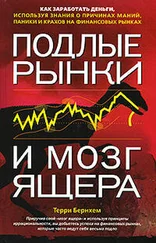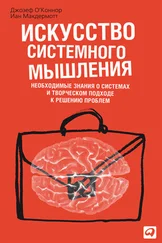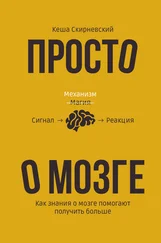Когда коуч помогает клиенту разобраться с его внутренней командой, принять прошлое и с воодушевлением посмотреть в будущее, он выполняет свои обязательства.
Эта книга уже изменила вас, потому что вы наверняка кое-что запомнили. Ваш мозг уже не тот, что был прежде, в самом начале. Надеемся, вашей команде тоже понравилось и все ее члены станут применять полученные знания для достижения счастья и обучения.
Algoe, S. B., Haidt, J., & Gable, S. L. (2008). Beyond reciprocity: Gratitude and relationships in everyday life. Emotion , 8(3), 425.
Brewer, J. A., Worhunsky, P. D., Gray, J. R., Tang, Y. Y., Weber, J., & Kober, H. (2011). Meditation experience is associated with differences in default mode network activity and connectivity. Proceedings of the National Academy of Sciences , 108(50), 20254–20259.
Desbordes, G., Negi, L. T., Pace, T. W. W., Wallace, B. A., Raison, C. L., & Schwartz, E. L. (2012). Effects of mindful-attention and compassion meditation training on amygdala response to emotional stimuli in an ordinary, non-meditative state. Frontiers in Human Neuroscience , 6, 292. doi:10.3389/fnhum.2012.00292.
DeSteno, D., Li, Y., Dickens, L., & Lerner, J. S. (2014). Gratitude: A tool for reducing economic impatience. Psychological Science , 25(6), 1262–1267.
Fox, G. R., Jonas, K., Hanna, D., & Antonio, D. (2015). Neural correlates of gratitude. Frontiers in Psychology , 6, 1491.
Froh, J. J., Sefick, W. J., & Emmons, R. A. (2008). Counting blessings in early adolescents: An experimental study of gratitude and subjective well-being. Journal of School Psychology , 46(2), 213–233.
O’Connor, J., & Lages, A. (2007). How coaching works . London, England: AC Black.
Paulson, S., Davidson, R., Jha, A., & Kabat-Zinn, J. (2013). Becoming conscious: The science of mindfulness. Annals of the New York Academy of Sciences , 1303(1), 87–104.
Sahakian, B., & Labuzetta, J. (2013). Bad Moves . Oxford, England: Oxford University Press.
Stickgold, R. (2005). Sleep-dependent memory consolidation. Nature , 437(7063), 1272.
Yoo, S. S., Gujar, N., Hu, P., Jolesz, F. A., & Walker, M. P. (2007). The human emotional brain without sleep – A prefrontal amygdala disconnect. Current Biology , 17(20), R877–R878.
https://www.psychologytoday.com/intl/blog/the-athletes-way/201404/physical-activity-improves-cognitive-function
https://www.frontiersin.org/article/10.3389/fpsyg.2015.01491
https://www.telegraph.co.uk/news/2018/06/15/smart-drug-epidemic-one-12-adults-admit-taking-trying-work/
Приложение 1. Библиография
Здесь вы найдете перечень книг, которые кажутся нам полезными и интересными.
Конечно, что-то мы наверняка упустили – нейробиология развивается стремительно. Мы делимся с вами самыми новыми работами и уверены, что их будет еще много.
Austin J. H. (1998). Zen and the brain: Toward an understanding of meditation and consciousness. MIT Press.
Baron-Cohen, S. (2011). The science of evil . Basic Books.
Damasio, Antonio, (2000). The feeling of what happens . Vintage Books.
Davidson, R. J., & Begley, S. (2012). The emotional life of your brain: How its unique patterns affect the way you think, feel, and live – and how you can change them . Penguin.
Doidge, N. (2007). The brain that changes itself: Stories of personal triumph from the frontiers of brain science . Penguin.
Eagleman, D. (2011). Incognito: The secret lives of the brain. New York: Pantheon.
Eagleman, D. (2015). The brain: The story of you . Vintage.
Fallon, J. (2013). The psychopath inside: A neuroscientist’s personal journey into the dark side of the brain . Penguin.
Frith, C. (2013). Making up the mind: How the brain creates our mental world . John Wiley & Sons.
Gazzaniga, M. S. (Ed.). (2014). Handbook of cognitive neuroscience . Springer.
Iacoboni, M., (2008). Mirroring people. Farrar, Straus & Giroux.
Johnson, S. (2004). Mind wide open: Your brain and the neuroscience of everyday life . Simon and Schuster.
Kurzban, R. (2012). Why everyone (else) is a hypocrite: Evolution and the modular mind . Princeton University Press.
LeDoux, J. (1998). The emotional brain: The mysterious underpinnings of emotional life . Simon and Schuster.
Levitin, D. J. (2006). This is your brain on music: The science of a human obsession . Penguin.
Lewis, M. (2015). The biology of desire: Why addiction is not a disease . Hachette UK.
Macknik, S., Martinez-Conde, S., & Blakeslee, S. (2010). Sleights of mind: What the neuroscience of magic reveals about our everyday deceptions . Henry Holt and Company.
Mischel, W. (2014). The Marshmallow test: Understanding self-control and how to master it . Random House.
Quartz, S. R., & Sejnowski, T. J. (2003). Liars, lovers, and heroes: What the new brain science reveals about how we become who we are . Harper Collins.
Ramachandran, V. S., Blakeslee, S., & Shah, N. (1998). Phantoms in the brain: Probing the mysteries of the human mind (pp. 224–225). New York: William Morrow.
Sahakian, B., & LaBuzetta, J. N. (2013). Bad Moves: How decision making goes wrong, and the ethics of smart drugs . OUP Oxford.
Schwartz, J. M., & Begley, S. (2009). The mind and the brain . Springer Science & Business Media.
Walker, M. (2017). Why we sleep. Allen Lane.
O’Connor, J., & Lages, A. (2009). How coaching works: The essential guide to the history and practice of effective coaching . A&C Black.
Stober, D. R., & Grant, A. M. (Eds.). (2010). Evidence based coaching handbook: Putting best practices to work for your clients . John Wiley & Sons.
Еще кое-что по нейробиологии и коучингу
Azmatullah, S. (2013). The coach’s mind manual: Enhancing coaching practice with neuroscience, psychology and mindfulness . Routledge.
Bossons, P., Riddell, P., & Sartain, D. (2015). The neuroscience of leadership coaching: Why the tools and techniques of Leadership Coaching Work . Bloomsbury Publishing.
Brann, A. (2017). Neuroscience for coaches: How to use the latest insights for the benefit of your clients . Kogan Page PublishersDehaene, S. (2014).
Consciousness and the brain: Deciphering how the brain codes our thoughts . Penguin.
Damasio, A. R. (2000). The feeling of what happens: Body and emotion in the making of consciousness. Vintage Books.
Glaser, J., (2014). Conversational Intelligence . Bibliomotion.
Greenfield, S. (2017). A day in the life of the brain. Penguin.
Higbee, K. L. (2001). Your memory: How it works and how to improve it . Da Capo Press.
Kandel, E. R. (2007). In search of memory: The emergence of a new science of mind . WW Norton & Company.
Читать дальше
Конец ознакомительного отрывка
Купить книгу











